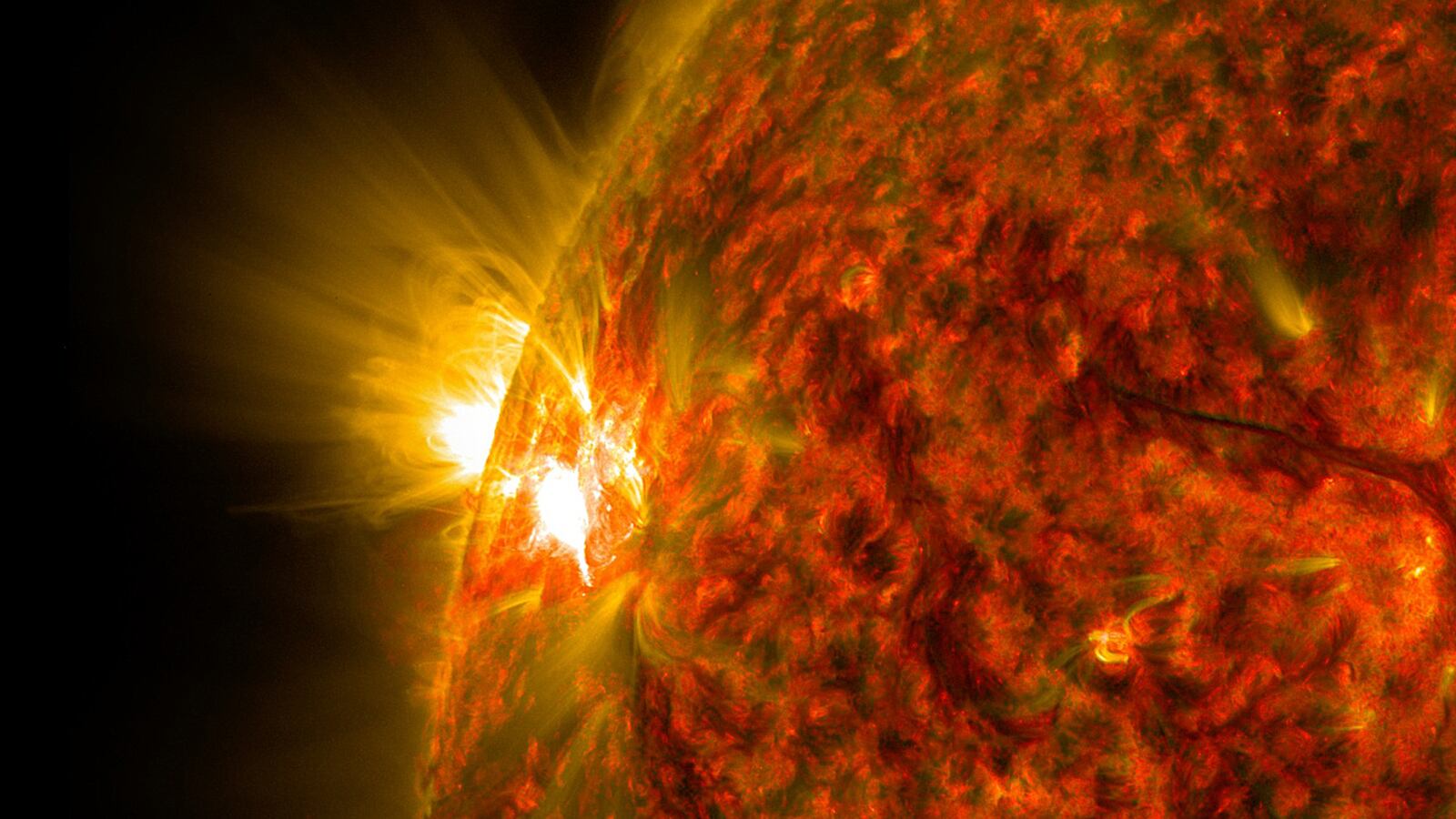The headline-stealing, climate-saving “mini ice age” predicted for 2030 won’t be making a dent in the rising temperatures predicted for the next 50 years. And what would cause that sort of cool-off is, well, nothing we want to happen.
First, let’s get this straight: Most of the climate science community has confirmed that last week’s breaking study suggesting a coming freeze like nothing we’ve seen since the 17th century will account for little more than a blip on the climate radar.
A spokesperson for the EPA told The Daily Beast that “Major climate science assessments such as the Intergovernmental Panel on Climate Change (Chapter 8.4.1.3), have stated that any cooling from a solar minimum would be much smaller in magnitude than projected warming due to increased greenhouse gases in our atmosphere.”
The now infamous Maunder Minimum, which saw the likes of the Thames in London freezing over, had little to do with solar activity.
Dr. John Harte, who holds a joint professorship in the Energy and Resources Group and the Ecosystem Sciences Division of the College of Natural Resources at UC Berkeley, says it’s just not possible: “There’s just nothing in solar physics that tells us there’s a plausible mechanism for a change in solar output on the scale of, say, three degrees Celsius.”
So with that in mind, we asked him, just out of curiosity, what it would take to actually cool things off. He says there are essentially two factors at play in history.
“If you look back at the long-term climate records,” he says, “that is, 300 million years of climate, we can ask what triggered cooling events to, let’s say, the three degrees of warming that we expect at the minimum over this century. When there were cooling dips in the climate record, what was going on?”
“There are really two major causes of cooling events that are comparable in size to the impending warming,” Harte says. Neither one of them has anything to do with the Sun. “One of them is an asteroid impact, or a comet impact. That’s what happened 65 million years ago, and the climate did cool by probably four or five degrees—maybe more. We don’t know exactly. If an asteroid slams into Earth,” he says, “we can negate global warming.”
Okay, scratch that. The other one isn’t so great either.
“The only other cause of a sharp cooling event is massive volcanic eruptions,” Harte says. “Volcanoes were probably the dominant contributor to the little ice age. It was not the Sun; it was almost certainly volcanic episodes which were not even big enough at that time to cancel out the impending warming.”
Harte says this doesn’t include smaller eruptions—the Iceland eruption that caused massive intercontinental flight problems is fairly moderate compared to what would be needed. He says it would take a massive Yellowstone event on the scale of “something that we haven’t seen in the last several thousand years and maybe much longer” to do it.
So that’s it, really: “Armageddon” or a large enough eruption to make “Dante’s Peak” look like a middle school science project.
Oh, Harte did add one other solution: “Nuclear war could do it,” he said. “A nuclear winter. So you can add that to the list.”
Harte said the effects of volcanic ash in the stratosphere or dust from an asteroid impact would be similar to global dimming, a phenomenon whereby light is blocked or absorbed before hitting the ground.
“I call it smoke and mirrors,” he explains, “because you either want to put a lot of smoky stuff up in the air that will absorb sunlight before it hits the ground, or shiny stuff that will reflect the sunlight. Either one, blocking sunlight to the surface causes cooling.”
And that’s not really something we can—or want to—reproduce mechanically.
“People have talked about the concept of deliberately injecting up into the stratosphere massive quantities of material that would block sunlight. That’s essentially what volcanoes do, and we are already doing it, but at a scale that’s nowhere near enough to cancel the warming,” Harte says. “It would take a deliberate attempt to get this stuff up at much higher concentrations and also into the stratosphere where it would have a longer half life.”
And that’s not really effective. After all, it didn’t work to stop solar-powered machines in The Matrix, did it?
So much for the dramatic cavalry solution to the problem.





